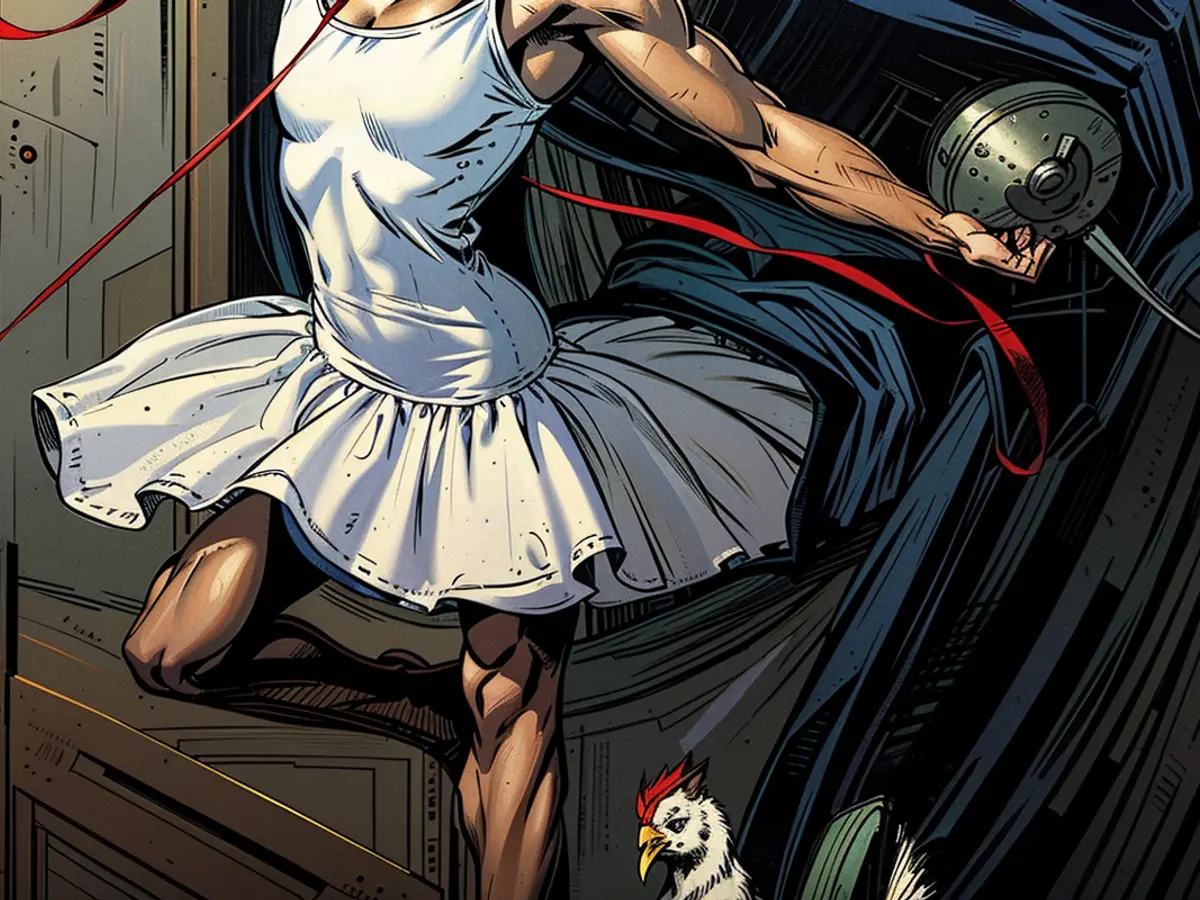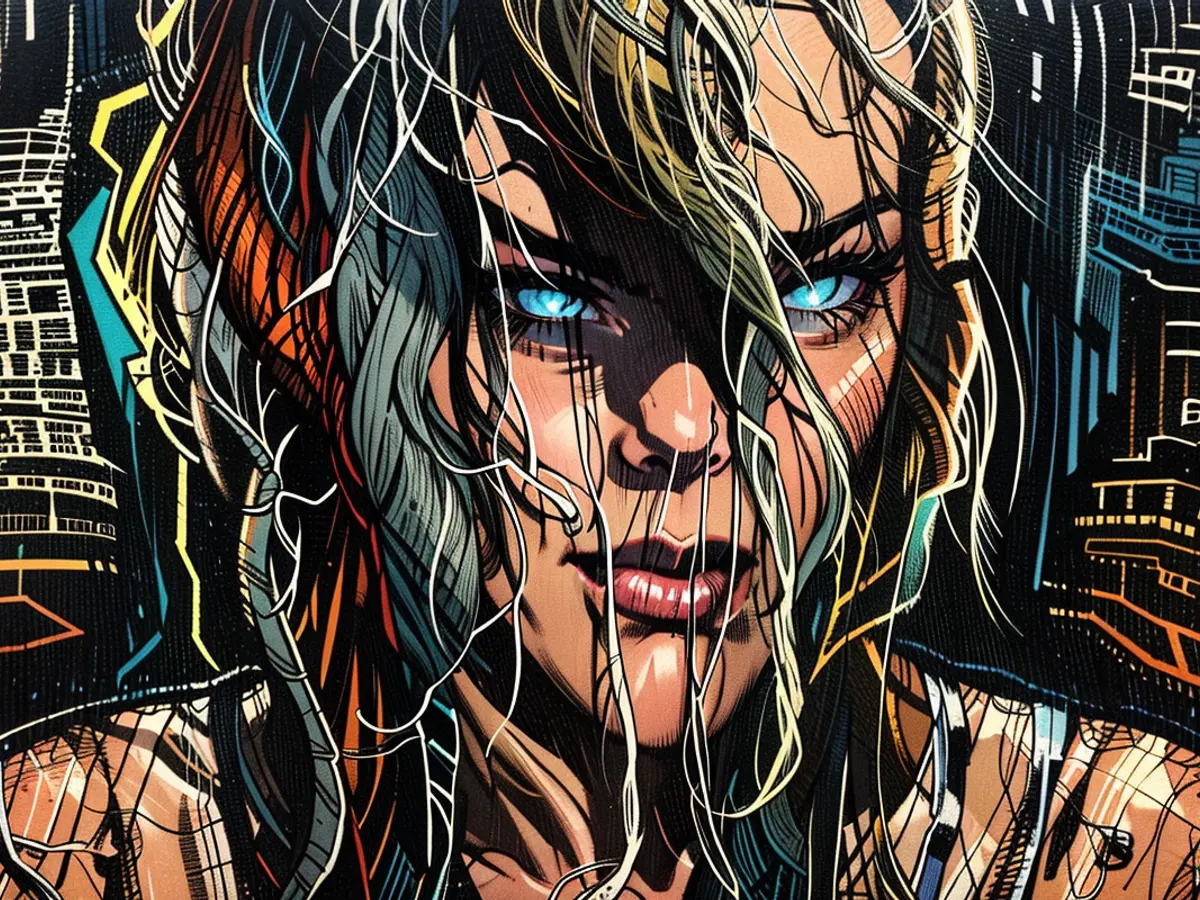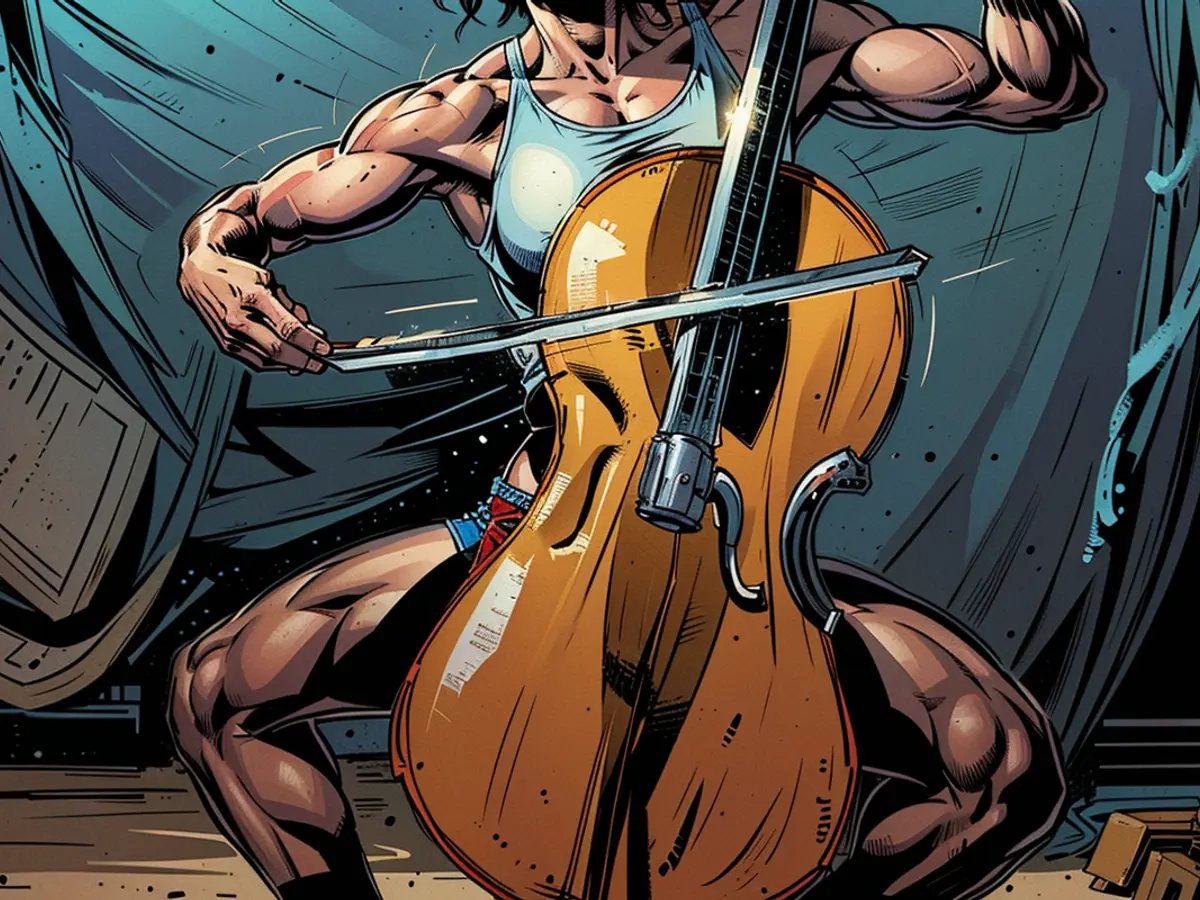Challenging the limits of Black art in a groundbreaking exhibition.
This photograph, featuring Chicago-born painter Thelonious Stokes, showcases a striking self-portrait. The compositional arrangement appears divided into two sections: on the dancer's right hand, which stretches towards the shadows, he grips a watermelon. A chicken occupies the space at his feet. His facial features, facing away from the light, are coated in coal black pigment - a frequent visual metaphor employed by Stokes, representing the insidious practice of blackface. As the dancer's body arcs gracefully to the top left of the painting, it seems as though he's being tugged back by a cluster of racially charged motifs.
In London, two of Stokes' oil paintings, "Tired of Being a N*gger; Champion of A Fowl; Crossroads red ribbons and chalk lines" (2023) and "The Cry", are on display as part of a new exhibition titled "The Whole World Smiles With You." This group show, curated by Alayo Akinkugbe at Opera Gallery, presents a richer interpretation of Black figurative painting. As Akinkugbe explained to CNN, the market often prioritizes art that expresses "Black Joy" - a term referring to resistance and liberation through celebration. This exhibition concentrates on breaking the mold of that generic classification.
Part of Akinkugbe's curatorial proclamation, the exhibition takes its name from the second portion of the 1928 song "When You're Smiling (The Whole World Smiles With You)," which Louis Armstrong later made famous. "The idea is that if a Black person is happy, then everything is okay," Akinkugbe shared. "All these vivid, bright, cheerful, presentable paintings did really well post-2020," she added, alluding to the widespread public outcry following the murder of George Floyd. "What happens if you don't make work that's so overtly Black, joyous, or positive?"
Divided into three categories, Akinkugbe focused on showcasing diverse forms of art that avoid simplifications. The gallery is adorned with Adjei Taiwah's effervescent portraits and Amoako Boafo's sensuous inquiries into flesh. These vibrant artworks, which have dominated the scene recently are, according to Akinkugbe, the ones which have become coveted in the art world.
Next, the depiction of Black individuals is wholly abandoned - a comment on the harmful history of Black caricatures, and what comes when the physical Black form is distorted as per political implications. Unrecognizable faces are obscured by drifting, loose threads (like noel Anderson's textile-based image) or represented through amalgams of clouds, horizons, terrains, and textures (as illustrated by multimedia artist Jazz Grant). "When we think of figurative art," said Akinkugbe, "it can be quite restrictive. I hope this exhibition demonstrates just how expansive it is."

Despite being an expansive term, figurative art is frequently associated with artists such as Leonardo da Vinci, Vermeer, David Hockney, Lucien Freud, and Jenny Saville, all of whom are white. In 2013, Bacon's 1969 triptych "Three Studies of Lucien Freud" auctioned for an astonishing amount, setting a new world record for the priciest painting ever sold.
When representation is not visible on the gallery walls, Stokes believes the solution lies in including himself in his portrayals. The concept of being a proactive participant, snatching back the mirror, is Akinkugbe's final theme. "I've always been intrigued," she said, "by how artists try to subvert the canon. They either replace white figures with Black ones or use European-style depictions of portraiture while featuring Black subjects."
Stokes prefers to appropriate Christian iconography, depicting it with exclusively Black subjects: "Blackwashing," as he calls it. "It's about furnishing individuals with something they can claim and treasure," he said. "When I rode through Ghana for the first time in West Africa, I noticed an abundance of depictions of the Anglo-Saxon Christ. It was a bit disheartening."
Stokes asserts that his work isn't reimagined but rather reclaimed. "The term reimagining disregards numerous truths," he stated. "I call it reclaiming." Nonetheless, refuting art history doesn't fascinate Stokes: his primary aspiration is to empower the African-American community. "I paint for the Black grandmas of tomorrow," he stated. "I hope they own these Judeo-Christian images, spread them as prints, and view them in their homes."

As public and institutional interest in Black art continues to grow, it's noticeable that this engagement is frequently connected to current events. According to a recent report by ArtNews and Morgan Stanley, sales of artworks by African-born artists, who were born after 1974, skyrocketed from $16.2 million in 2010 to $40.6 million in 2021. However, by 2023, the total dropped from $52.1 million to $17.9 million.
Akinkugbe, reflecting on this trend, remarked, "I think the art world experienced a significant response to 2020. So the question now is, where do we go from here? It's not entirely novel for Black artists to experience a surge in interest, only to be seen as a trend after a while. We've seen this happen with the Black Arts Movements in the US and UK in the '80s, as well as during the Harlem Renaissance in the 1920s."
She continued, "I hope exhibitions like 'The Whole World Smiles With You' can challenge the dominance of the 'white syllabus' in art history. It would be fantastic if these paintings could widen someone's understanding of Black art. I can only hope that this happens. But I'm uncertain if it can effectively change the way art history is taught."

Read also:
The exhibit showcases how Thelonious Stokes challenges traditional Black art styles with his unique self-portraits, incorporating elements of the classical style but with a distinctly Black perspective. This is evident in his painting "Tired of Being a N*gger; Champion of A Fowl; Crossroads red ribbons and chalk lines."
In Alayo Akinkugbe's curation of "The Whole World Smiles With You" exhibition, she aims to break the mold of generic classifications of Black art, highlighting the diversity in Black figurative painting and showcasing artists who explore unconventional styles and themes, such as Noel Anderson with his textile-based image.








